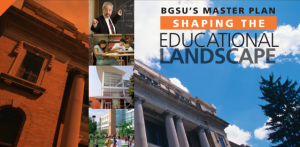On September 14, 2010 Assistant Vice President of Capital Planning, Bob Waddle, came to talk with our TLEP 4830 class about the different construction projects happening on and around Bowling Green’s campus. Although Bob did not get to answer questions that students had prepared by the end of class, I believe his presentation was informative enough without the student’s questions. Bob explained the various aspects associated with capital planning and “behind the scenes work” of facility development. There are many different aspects that go into capital planning and facility development that I was unaware of.
One aspect Bob talked about when designing a facility was, contractors and “the budget.” He explained that when building a facility it is better to have an analysis of the buildings needs rather than a designed layout. The reason for this is because, budgets often create limits and it is easier for the designers to come out with a design that meets the budget and the needs of the building rather than the capital planners. He also expressed all of the different aspects of contracting that are involved when building a new facility. We were informed that there is a contractor for plumbing, electric, construction and ect… Considering a designer and contractor is an extensive process because according to Bob, “we want to have a connection with the company, as well, because we will be working with them for a long while.”
Another interesting aspect of construction planning was the various details that go into the designing process. One aspect that Bowling Green State University is trying to incorporate in their buildings is LEED. “The LEED green building certification program encourages and accelerates global adoption of sustainable green building and development practices through a suite of rating systems that recognize projects that implement strategies for better environmental and health performance”(usgbc.org). “LEED rating systems are developed through an open, consensus-based process led by LEED committees. Each volunteer committee is composed of a diverse group of practitioners and experts representing a cross-section of the building and construction industry. The key elements of USGBC’s consensus process include a balanced and transparent committee structure, technical advisory groups that ensure scientific consistency and rigor, opportunities for stakeholder comment and review, member ballot of new rating systems, and a fair and open appeals process”(usgbc.org).
Some colleges in Ohio are making strides to incorporate sustainability into their curriculum. The BG News decided to look at five Ohio four-year public universities BGSU, Kent State University, University of Toledo, University of Cincinnati, and Ohio State University and their commitment to sustainability (BG News.edu).
Of the five universities analyzed for sustainability, all five said they are taking strides toward making campus buildings environmentally friendly. “Both UC and KSU have made commitments to establishing all new buildings as LEED certified. UC has made this commitment since 2006 and KSU just made a commitment in 2009. At BGSU, two buildings under construction are being LEED certified: the Wolfe Center for the Arts and the Stroh Convocation Center. It is unknown if the two new residence halls under construction at BGSU will be LEED certified, Director of Sustainability Nick Hennessy said” (BG News.edu).
Although some universities are turning toward a more energy-friendly mindset, OSU Director of Energy Services and Sustainability Aparna Dial said OSU has been making sustainability efforts for “decades.”The formalization of the sustainability program was in 2006, but we’ve been doing energy conservation for a long time,” Dial said. Dial hopes to make OSU one of the most sustainable universities in the country. The university, as of December 2008, put in place its official policy to reduce on- and off-campus building energy consumption by 20 percent by 2014 to comply with an Ohio House Bill (iee.osu.edu).
The other four universities have made strides toward environmentally friendly initiatives in other ways. UT is working to improve sustainability after receiving a D+ on 2009 College Sustainability report card. UT Director of Energy Management Harvey Vershum said the university is doing this by improving buildings on campus to meet LEED standards and it has made improvements in climate change and energy, food and recycling, green buildings and student involvement (utoledo.edu).
KSU are approaching eco-friendly initiatives through the establishment of sustainability groups and committees. In fall 2008, KSU President Lester Left announced the university was starting its own sustainability task force composed of nine different subcommittees whose goals are to increase sustainability on campus. “By creating the task force and my job, it allows us to connect dots and create a baseline,” said Melanie Knowles, manager of sustainability at KSU. “One hundred people are involved in the sustainability task force. We bring ideas and brainstorm what should Kent State be doing, what options do we have and we make recommendations about those discussions” (kent.edu).
